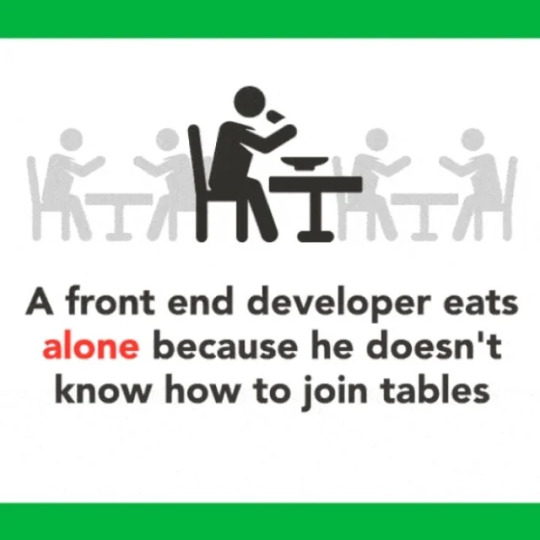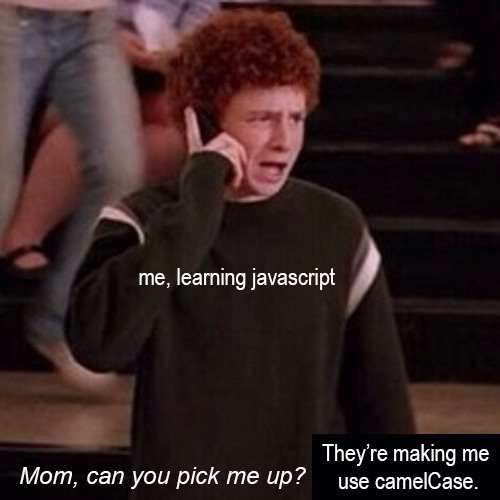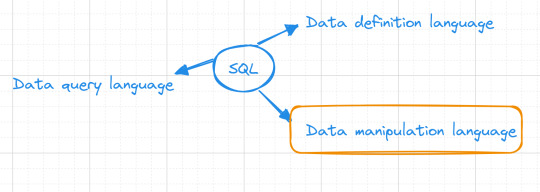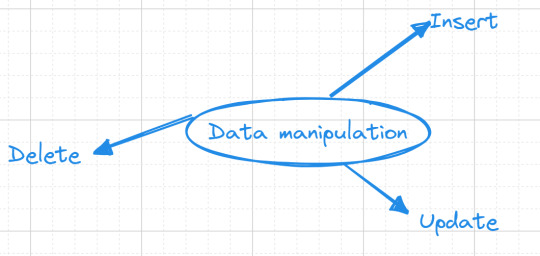#sql code
Explore tagged Tumblr posts
Text
Understanding the Basics of Team Foundation Server (TFS)

In software engineering, a streamlined system for project management is vital. Team Foundation Server (TFS) provides a full suite of tools for the entire software development lifecycle.
TFS is now part of Azure DevOps Services. It is a Microsoft tool supporting the entire software development lifecycle. It centralizes collaboration, version control, build automation, testing, and release management. TFS (Talend Open Studio) is the foundation for efficient teamwork and the delivery of top-notch software.
Key Components of TFS
The key components of team foundation server include-
Azure DevOps Services (formerly TFS): It is the cloud-based version of TFS. It offers a set of integrated tools and services for DevOps practices.
Version Control: TFS provides version control features for managing source code. It includes centralized version control and distributed version control.
Work Item Tracking: It allows teams to track and manage tasks, requirements, bugs, and other development-related activities.
Build Automation: TFS enables the automation of the build process. It allows developers to create and manage build definitions to compile and deploy applications.
Test Management: TFS includes test management tools for planning, tracking, and managing testing efforts. It supports manual and automated testing processes.
Release Management: Release Management automates the deployment of applications across various environments. It ensures consistency and reliability in the release process.
Reporting and Analytics: TFS provides reporting tools that allow teams to analyze their development processes. Custom reports and dashboards can be created to gain insights into project progress.
Authentication and Authorization: TFS and Azure DevOps manage user access, permissions, and security settings. It helps to protect source code and project data.
Package Management: Azure DevOps features a package management system for teams to handle and distribute software packages and dependencies.
Code Search: Azure DevOps provides powerful code search capabilities to help developers find and explore code efficiently.
Importance of TFS
Here are some aspects of TFS that highlight its importance-
Collaboration and Communication: It centralizes collaboration by integrating work items, version control, and building processes for seamless teamwork.
Data-Driven Decision Making: It provides reporting and analytics tools. It allows teams to generate custom reports and dashboards. These insights empower data-driven decision-making. It helps the team evaluate progress and identify areas for improvement.
Customization and Extensibility: It allows customization to adapt to specific team workflows. Its rich set of APIs enables integration with third-party tools. It enhances flexibility and extensibility based on team needs.
Auditing and Compliance: It provides auditing capabilities. It helps organizations track changes and ensure compliance with industry regulations and standards.
Team Foundation Server plays a pivotal role in modern software development. It provides an integrated and efficient platform for collaboration, automation, and project management.
Learn more about us at Nitor Infotech.
#Team Foundation Server#data engineering#sql server#big data#data warehousing#data model#microsoft sql server#sql code#data integration#integration of data#big data analytics#nitor infotech#software services
1 note
·
View note
Text

#he thinks he “programs” in html#frontend dev#nerdy memes#programmer#coding#programming memes#nerd humour#programming#programming meme#nerdy meme#html#sql
178 notes
·
View notes
Text
I go by no pronouns but not as in my name, more so like my pronouns are an undefined variable in shell coding
#neo.txt#coding#programming#like. 5 people will get this#shell and unix in gen are a pretty niche kinda part of programming#with people more so sticking to python html java and the C family#and i guess sql? SQL counts as a language itself doesn't it?#I haven't really used it outside of making basic databases so I don't know fundamentally what it is and why it was created#anyways this was your fairly-rare-on-tumblr more-common-on-twitter tech ramble
18 notes
·
View notes
Text
SQL Fundamentals #1: SQL Data Definition
Last year in college , I had the opportunity to dive deep into SQL. The course was made even more exciting by an amazing instructor . Fast forward to today, and I regularly use SQL in my backend development work with PHP. Today, I felt the need to refresh my SQL knowledge a bit, and that's why I've put together three posts aimed at helping beginners grasp the fundamentals of SQL.
Understanding Relational Databases
Let's Begin with the Basics: What Is a Database?
Simply put, a database is like a digital warehouse where you store large amounts of data. When you work on projects that involve data, you need a place to keep that data organized and accessible, and that's where databases come into play.
Exploring Different Types of Databases
When it comes to databases, there are two primary types to consider: relational and non-relational.
Relational Databases: Structured Like Tables
Think of a relational database as a collection of neatly organized tables, somewhat like rows and columns in an Excel spreadsheet. Each table represents a specific type of information, and these tables are interconnected through shared attributes. It's similar to a well-organized library catalog where you can find books by author, title, or genre.
Key Points:
Tables with rows and columns.
Data is neatly structured, much like a library catalog.
You use a structured query language (SQL) to interact with it.
Ideal for handling structured data with complex relationships.
Non-Relational Databases: Flexibility in Containers
Now, imagine a non-relational database as a collection of flexible containers, more like bins or boxes. Each container holds data, but they don't have to adhere to a fixed format. It's like managing a diverse collection of items in various boxes without strict rules. This flexibility is incredibly useful when dealing with unstructured or rapidly changing data, like social media posts or sensor readings.
Key Points:
Data can be stored in diverse formats.
There's no rigid structure; adaptability is the name of the game.
Non-relational databases (often called NoSQL databases) are commonly used.
Ideal for handling unstructured or dynamic data.
Now, Let's Dive into SQL:

SQL is a :
Data Definition language ( what todays post is all about )
Data Manipulation language
Data Query language
Task: Building and Interacting with a Bookstore Database
Setting Up the Database
Our first step in creating a bookstore database is to establish it. You can achieve this with a straightforward SQL command:
CREATE DATABASE bookstoreDB;
SQL Data Definition
As the name suggests, this step is all about defining your tables. By the end of this phase, your database and the tables within it are created and ready for action.

1 - Introducing the 'Books' Table
A bookstore is all about its collection of books, so our 'bookstoreDB' needs a place to store them. We'll call this place the 'books' table. Here's how you create it:
CREATE TABLE books ( -- Don't worry, we'll fill this in soon! );
Now, each book has its own set of unique details, including titles, authors, genres, publication years, and prices. These details will become the columns in our 'books' table, ensuring that every book can be fully described.
Now that we have the plan, let's create our 'books' table with all these attributes:
CREATE TABLE books ( title VARCHAR(40), author VARCHAR(40), genre VARCHAR(40), publishedYear DATE, price INT(10) );
With this structure in place, our bookstore database is ready to house a world of books.
2 - Making Changes to the Table
Sometimes, you might need to modify a table you've created in your database. Whether it's correcting an error during table creation, renaming the table, or adding/removing columns, these changes are made using the 'ALTER TABLE' command.
For instance, if you want to rename your 'books' table:
ALTER TABLE books RENAME TO books_table;
If you want to add a new column:
ALTER TABLE books ADD COLUMN description VARCHAR(100);
Or, if you need to delete a column:
ALTER TABLE books DROP COLUMN title;
3 - Dropping the Table
Finally, if you ever want to remove a table you've created in your database, you can do so using the 'DROP TABLE' command:
DROP TABLE books;
To keep this post concise, our next post will delve into the second step, which involves data manipulation. Once our bookstore database is up and running with its tables, we'll explore how to modify and enrich it with new information and data. Stay tuned ...
Part2
#code#codeblr#java development company#python#studyblr#progblr#programming#comp sci#web design#web developers#web development#website design#webdev#website#tech#learn to code#sql#sqlserver#sql course#data#datascience#backend
112 notes
·
View notes
Text

day 43 // 100doc
finished sql lab
finished movies problem
worked on fiftyville - gotta check my queries tmr bc I don't get the right answers...
#stemblr#studyblr#codeblr#progblr#100 days of code#100 days of studying#heyfrithams#cs50#heydilli#heyharri#heyzainab#benniscup#sql#computer science#coding#programming#sqlite#mittonstudies
86 notes
·
View notes
Text
I made a dorky meme

Uh. Enjoy tumblr
(For the code-challenged: this is like learning how to read via the dictionary)
#coding?#python#sql#javascript#html css#coding#computer#datascience#whatever else will get this seen by just the people that should see it and laugh
18 notes
·
View notes
Text
Writing SQL code is piss easy I can't believe this is a 3 credit class.
11 notes
·
View notes
Text
Programmers, Web designers, game developers, anyone else who does stuff with numbers on a computer screen.....curious to know if you guys ever dream in code, and if so, do you like it? I for one do not find it to be particularly enjoyable but want to hear what others have to say lol.
#php will be the death of me#web design#programming#coding#game developers#code#computer programming#computers#computer science#html#css#html css#javascript#visualbasic#c#c++#python#software engineering#sql
40 notes
·
View notes
Text
lord I am so exhausted of applying to dozens of jobs every week without getting a single response other than your application wasn’t selected. my current job is wrecking me and I am so burnt out and just want a job that pays well and doesn’t make me want to die 24/7. im at my wits end like who do I need to pay to make my resume/linkedin stand out because how do people hear back from jobs??? what am I doing wrong
#all I can do is cry#im so exhausted#corporate work is so hard and soul sucking#except for the people who have good corporate jobs how do they get those and why have I submit over a thousand apps within the last year#and heard back from maybe 3#im so tired#if only I had gotten a degree in fucking computer science lol#the only industry that pays well and doesn’t require you to sell your soul and life#i’ve been trying to teach myself sql and python but im failing miserably#if I had just done coding in college and not stupid fucking finance :)
21 notes
·
View notes
Text

I'm applying to coding bootcamps (in my retraining efforts toward a stable career to fall back on whenever media industry is being an ass (aka their default state)) and this one is making me learn javascript as part of the application process, and I'm like just let me use my snake_case, you monsters ToT
#coding#javascript#meme#I just wanna learn python and SQL so I can make quiche as a data analyst ToT#C++ was nicer than this#what barbarians put all their code on the same line#just use semicolons like normal ppl#I want to be able to SEE MY CODE#javascript was not the coding language I was planning on being my next one wasn't even on the list but alas#the things I do for government funded free education that will sound more official than 'I learnt it on youtube trust me bro'
14 notes
·
View notes
Text
2 notes
·
View notes
Text
SQL Fundamentals #2: SQL Data Manipulation

In our previous database exploration journey, SQL Fundamentals #1: SQL Data Definition, we set the stage by introducing the "books" table nestled within our bookstore database. Currently, our table is empty, Looking like :
books
| title | author | genre | publishedYear | price |
Data manipulation

Now, let's embark on database interaction—data manipulation. This is where the magic happens, where our "books" table comes to life, and we finish our mission of data storage.
Inserting Data
Our initial task revolves around adding a collection of books into our "books" table. we want to add the book "The Great Gatsby" to our collection, authored F. Scott Fitzgerald. Here's how we express this in SQL:
INSERT INTO books(title, author, genre, publishedYear, price) VALUES('The Great Gatsby', 'F. Scott Fitzgerald', 'Classic', 1925, 10.99);
Alternatively, you can use a shorter form for inserting values, but be cautious as it relies on the order of columns in your table:
INSERT INTO books VALUES('The Great Gatsby', 'F. Scott Fitzgerald', 'Classic', 1925, 10.99);
Updating data
As time goes on, you might find the need to modify existing data in our "books" table. To accomplish this, we use the UPDATE command.For example :
UPDATE books SET price = 12.99 WHERE title = 'The Great Gatsby';
This SQL statement will locate the row with the title "The Great Gatsby" and modify its price to $12.99.
We'll discuss the where clause in (SQL fundamentals #3)
Deleting data
Sometimes, data becomes obsolete or irrelevant, and it's essential to remove it from our table. The DELETE FROM command allows us to delete entire rows from our table.For example :
DELETE FROM books WHERE title = 'Moby-Dick';
This SQL statement will find the row with the title "Moby-Dick" and remove it entirely from your "books" table.
To maintain a reader-friendly and approachable tone, I'll save the discussion on the third part of SQL, which focuses on data querying, for the upcoming post. Stay tuned ...
#studyblr#code#codeblr#javascript#java development company#study#progblr#programming#studying#comp sci#web design#web developers#web development#website design#webdev#website#tech#sql#sql course#mysql#datascience#data#backend
45 notes
·
View notes
Text
i am going to take a shower and i am going to get into bed and i am going to read my book and i will stop fucking thinking for five minutes and fall the fuck asleep
#i do not have high hopes for this vehicle registration appointment tomorrow#i also have to get gas :(#and drive to my bestie’s workplace bc she printed things for me and we forgot to exchange them at dinner#and then drive Extremely downtown for this appointment :(#i am very tired and spent all day doing car things :(#i don’t Want to learn R or SQL or code a lot i want to do my silly little tech market research and read five million articles a day
13 notes
·
View notes
Text
To do 9-24-23
I’ll study for 6 hours today 🧍
Mostly going to focus on interview practice and SQL.
23 notes
·
View notes
Text
SQL GitHub Repositories
I’ve recently been looking up more SQL resources and found some repositories on GitHub that are helpful with learning SQL, so I thought I’d share some here!
Guides:
s-shemee SQL 101: A beginner’s guide to SQL database programming! It offers tutorials, exercises, and resources to help practice SQL
nightFuryman SQL in 30 Days: The fundamentals of SQL with information on how to set up a SQL database from scratch as well as basic SQL commands
Projects:
iweld SQL Dictionary Challenge: A SQL project inspired by a comment on this reddit thread https://www.reddit.com/r/SQL/comments/g4ct1l/what_are_some_good_resources_to_practice_sql/. This project consists of creating a single file with a column of randomly selected words from the dictionary. For this column, you can answer the various questions listed in the repository through SQL queries, or develop your own questions to answer as well.
DevMountain SQL 1 Afternoon: A SQL project where you practice inserting querying data using SQL. This project consists of creating various tables and querying data through this online tool created by DevMountain, found at this link https://postgres.devmountain.com/.
DevMountain SQL 2 Afternoon: The second part of DevMountain’s SQL project. This project involves intermediate queries such as “practice joins, nested queries, updating rows, group by, distinct, and foreign key”.
36 notes
·
View notes
Text
My certificate from SoloLearn ...

Topics: Data Programming with SQL & Python
Post #59: SoloLearn, Data Programming, SQL and Python Tutorial, 2025.
#coding#programmieren#learning#teaching#programming#education#studying#coding for kids#turtle programming#python#sql#python programming#sololearn
4 notes
·
View notes